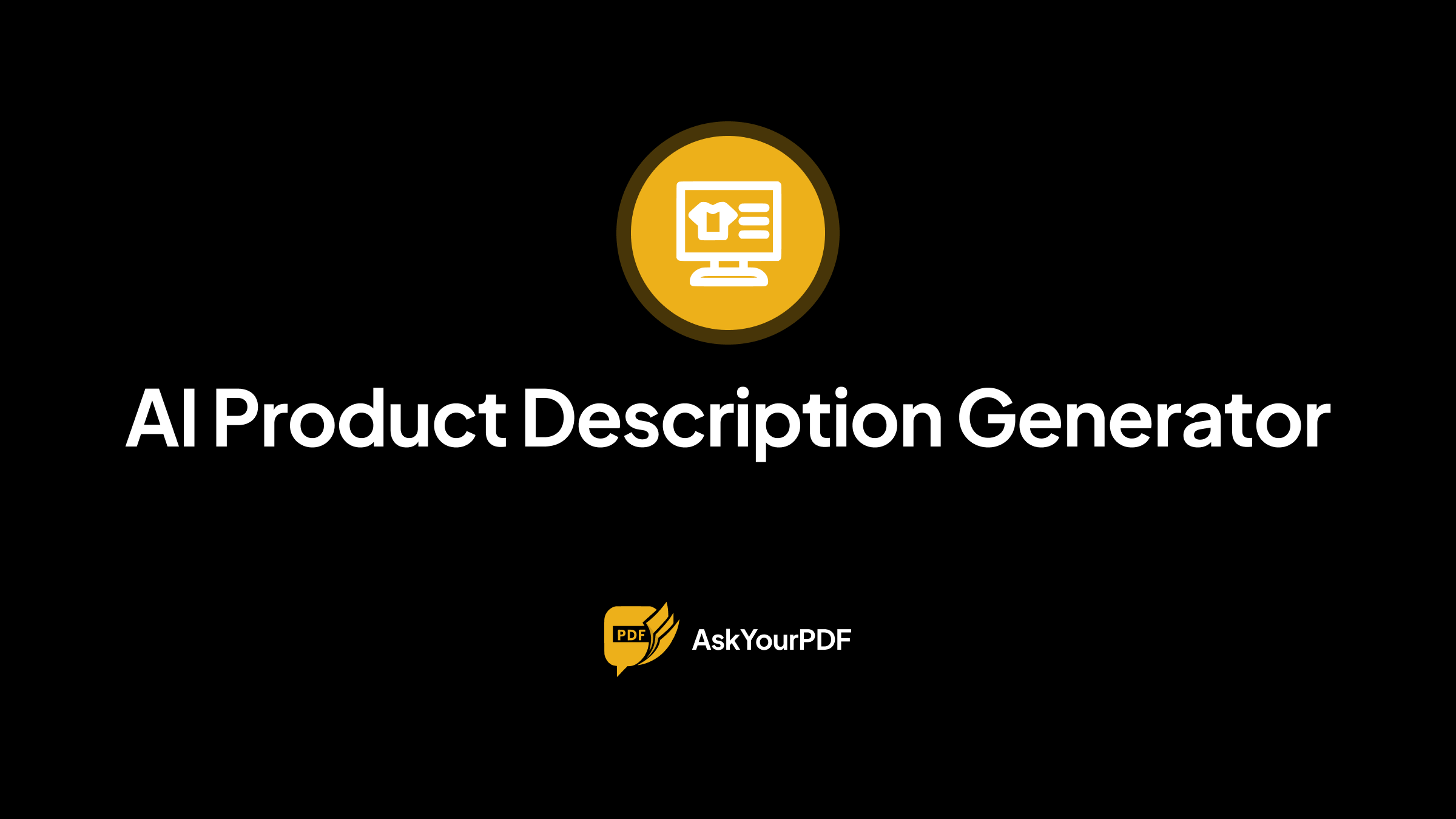AI for Product Description Generation

The art of crafting compelling product descriptions has become a crucial aspect of e-commerce and digital marketing. As consumers, we’re often drawn to products that promise to solve our problems, improve our lives, or simply bring us joy. But what makes a product description truly effective? In this article, we’ll delve into the world of product description generation, exploring the latest trends, techniques, and tools that can help businesses create captivating product descriptions that drive sales and customer engagement.
The Importance of Product Descriptions
Product descriptions are more than just a list of features and benefits; they’re a gateway to creating an emotional connection with potential customers. A well-crafted product description can:
- Build trust: By providing accurate and detailed information, businesses can establish trust with their customers and demonstrate a commitment to transparency.
- Highlight unique selling points: Product descriptions can help businesses differentiate themselves from competitors and highlight what sets their product apart.
- Address customer pain points: By understanding the needs and concerns of their target audience, businesses can create product descriptions that speak directly to those pain points and offer solutions.
- Drive conversions: Compelling product descriptions can increase the likelihood of a sale by providing customers with the information they need to make an informed purchasing decision.
The Role of AI in Product Description Generation
Artificial intelligence (AI) has revolutionized the way businesses approach product description generation. With the help of AI-powered tools, businesses can:
- Analyze customer data: AI can help businesses analyze customer feedback, reviews, and purchasing behavior to create product descriptions that resonate with their target audience.
- Generate high-quality content: AI-powered content generation tools can produce high-quality product descriptions that are engaging, informative, and optimized for search engines.
- Optimize for SEO: AI can help businesses optimize their product descriptions for search engines, increasing the visibility of their products and driving organic traffic to their website.
- Personalize product descriptions: AI can help businesses create personalized product descriptions that cater to the unique needs and preferences of individual customers.
Techniques for Effective Product Description Generation
While AI can certainly help with product description generation, there are several techniques that businesses can use to create effective product descriptions:
- Focus on benefits: Instead of just listing features, focus on the benefits that the product provides to the customer.
- Use social proof: Incorporate customer testimonials, reviews, and ratings to build trust and credibility.
- Highlight unique selling points: Differentiate your product from competitors by highlighting what sets it apart.
- Use storytelling techniques: Use narrative techniques to create an emotional connection with the customer and make the product more relatable.
- Optimize for mobile: Ensure that product descriptions are optimized for mobile devices, with short paragraphs, concise language, and easy-to-read formatting.
Tools for Product Description Generation
There are several tools available that can help businesses generate high-quality product descriptions, including:
- Content generation platforms: Platforms like WordLift, Content Blossom, and AI Writer offer AI-powered content generation tools that can help businesses create product descriptions.
- Product information management (PIM) systems: PIM systems like Akeneo, Pimcore, and Stibo Systems help businesses manage and optimize their product data, including product descriptions.
- SEO optimization tools: Tools like Ahrefs, SEMrush, and Moz offer SEO optimization features that can help businesses optimize their product descriptions for search engines.
Best Practices for Product Description Generation
To get the most out of product description generation, businesses should follow these best practices:
- Keep it concise: Product descriptions should be concise and to the point, avoiding unnecessary jargon and technical terms.
- Use high-quality images: High-quality images can help illustrate the product and make it more appealing to customers.
- Optimize for accessibility: Ensure that product descriptions are optimized for accessibility, with clear formatting, headings, and descriptive alt tags for images.
- Use a conversational tone: Use a conversational tone that resonates with the target audience and creates a sense of familiarity.
- Continuously test and refine: Continuously test and refine product descriptions to ensure they’re meeting customer needs and driving sales.
FAQs
What is the purpose of a product description?
+The purpose of a product description is to provide customers with a clear understanding of the product's features, benefits, and value proposition, ultimately driving sales and customer engagement.
How can AI help with product description generation?
+AI can help with product description generation by analyzing customer data, generating high-quality content, optimizing for SEO, and personalizing product descriptions to cater to individual customer needs.
What are some best practices for product description generation?
+Best practices for product description generation include keeping it concise, using high-quality images, optimizing for accessibility, using a conversational tone, and continuously testing and refining product descriptions.
In conclusion, product description generation is a crucial aspect of e-commerce and digital marketing. By leveraging AI-powered tools, techniques, and best practices, businesses can create compelling product descriptions that drive sales, customer engagement, and loyalty. Whether you’re a seasoned marketer or just starting out, understanding the importance of product descriptions and how to generate effective ones can make all the difference in the success of your business.